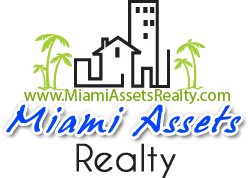There are many different kinds of collaboration platforms out there, and chances are that you have been using them pretty religiously over the past years. These tools, as the name suggests, helps teams to stay in contact and achieve collective goals together. Since there are limited distractions with this communication, people set aside time to correspond to messages and address issues, this makes their work-time all the more productive and fruitful. Synchronous communication may be a face-to-face type of conversation, it might be a message or a full-blown brainstorming session. The difference between the two is that synchronous communication happens in real-time.
Nowadays, I’m willing to bet you rarely – if ever – stroll casually over to a coworker’s desk to discuss the details of an upcoming project. Your processes and workflows grow as you do, which means you need a way to document and share all that knowledge, like Notion, definition of asynchronous communication wikis, forums, and intranets. This way, they won’t have to face constant interruption and go back-and-forth with their colleagues, hampering their work quality. Instead, they can progress at their own pace and keep the team informed in case of any delay.
What is an example of synchronous and asynchronous communication?
They’re a time to chat about work projects, roadblocks, career development, and share two-way feedback. Most importantly though, they’re a time to build a foundation of trust—the key to working https://remotemode.net/ together effectively. It’s this kind of disruption that sometimes gives synchronous communication a bad rep and why a handful of companies are moving towards an async-first work culture.
Asynchronous communication promotes productivity and effective collaboration. Internal communication is the process through which employees stay connected and informed within an organization. It defines how information is shared up and down communication channels, as well as laterally, and in what format (verbal, written and digital) needs. The sender doesn’t expect an immediate response and the recipient can read and respond on their own schedule. Too many in-person meetings take people away from focus work, but that doesn’t mean you should ditch them altogether.
How is it different from synchronous communication?
Asynchronous work relies on transparency as team members need to be able to find answers to their own questions when others are offline. This leads to more transparent workplaces that give employees access to as much as possible. Like being documented by default, increased transparency improves decision-making as everyone can make decisions based on access to the same information. When you can’t expect a message back in minutes, people learn how to manage their workloads better and plan ahead. This leads to a more well-run company, less stress, and higher quality work.
In this post, you’ll get some examples of synchronous communication and see how to effectively use them to hit the right note every time. We’ll also cover how to create a balance between async and synchronous communication to maximize productivity and employee engagement. For asynchronous communication to take place, it’s not necessary for all participants to be present in real time. Consider the way you send out an email to a colleague, receive a company newsletter, or chat with your boss on Slack. In this article, we’ll share 7 examples of asynchronous communication and how to use each one of them to take your team communication to the next level. Asynchronous communication is not a new thing by any means — the concept goes back to papyrus notes and writing on the wall.
What Is Asynchronous Communication and Why It’s So Good
Some things are better left to synchronous communication methods, particularly if they are urgent or sensitive. It simply takes longer to build rapport and personal relationships without some form of real-time interaction. With that said, you’d be surprised how few things actually need real-time communication. It’s often easier to give more honest feedback when working asynchronously than in person due to the online disinhibition effect.
The modern office environment can be hectic — full of interruptions that get in the way of productivity. There can also be a lot of background noise and frequent distractions, such as employees coming to your desk to try to talk to you while you’re working, coffee machines running, and office gossip. With cloud collaboration tools, you’ll have a place to store all of your content — content that writers and editors can update at any time.
